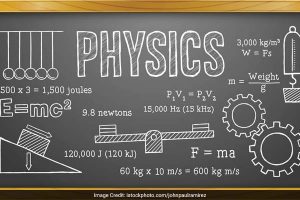Electrode Potential
Electrode Potential:-
The electrical potential difference set up between metals and its ions in the solution is called electrode potential.
Cell potential or EMF of a cell:- The difference between the electrode potential of the two half-cell is known as cell potential or cell voltage it is called Electromotive Force or EMF of the cell if no current is drawn from the cell.
Electrochemical series:-
The various electrodes have been arranged in order of their increasing value of standard reduction potentials. This arrangement is called electrochemical series


Nernst equation for electrode potential:-
Mn+ + ne- –> M
Then Nernst equation is,
![]()
![]()
Where, E = electrode potential under given concentration of Mn+ ions and temperature T.
E0 = standard electrode potential.
R = gas constant.
T = Temperature in K
F = one Faraday
n = No. of electrons involves in the electrode reaction.
Also put, R = 8.314 Jk-1mol-1
F = 96500 coulombs; T = 298 k


Primary Cells
Dry cell:-
It consists of a cylindrical zinc container which acts as a anode. A graphite rod is placed between the centres, acts as a cathode. The space between the cathode and the anode is so packed with the paste of NH4Cl and ZnCl2 and graphite is surrounded by MnO2 and carbon


Reactions,
At Anode: – Zn (s) –> Zn2+ (aq) + 2e-
At cathode: – 2MnO2 (s) + 2NH4+ (aq) + 2e- –> Mn2O3 (s) + 2NH3 (g) +H2O
These cells have voltage in range of 1.25 V to 1.50 V have no long life.
Mercury cell (Ruber Mallory cell) :-
It consists of zinc container as anode, a carbon rod as cathode and a paste of mercuric oxide mixed with KOH as the electrolyte a lining of porous paper separate the electrolyte from zinc container.
Cell reaction:-
At Anode : – Zn + 2OH- –> ZnO + H2O + 2e-
At Cathode: – HgO + H2O+2e- –> Hg + 2OH-


Lead storage battery:-
cell consist of lead anode and a grid of lead packed with lead dioxide acts as lead cathode. These electrodes are arranged alternatively separated by fiber glass sheet and suspended in sulfuric acid (dilute) which acts as electrolyte.
Electrode reaction occurs during discharge battery:-
At Anode :- Pb + SO42- –> PbSO4 + 2e-
At Cathode: – PbO2 + SO42- + 4H+ + 2e- –> PbSO4 +2H2O
In above reactions H2SO4 is used hence density of H2SO4 is decreases so battery will discharge.
During charging:-
The electrode reaction is reserved.
PbSO4 + 2e- –> Pb + SO42-
PbSO4 +2H2O –> PbO2 + SO42- + 4H+ + 2e-
Nickel Cadmium Storage Cell:-
It consists of cadmium electrode (as Anode) and metal grid of nickel (iv) oxide as cathode immersed in KOH solution.


Reaction occurs during discharge of cell:-
At Anode: – Cd + 2OH- –> Cd(OH)2 + 2e-
At Cathode: – NiO2 + 2H2O +2e- –> Ni(OH)2 + 2OH-
Hence,The reaction can be reversed during charging. The potential of each Ni-Cd cell is approximately 1.4 V




